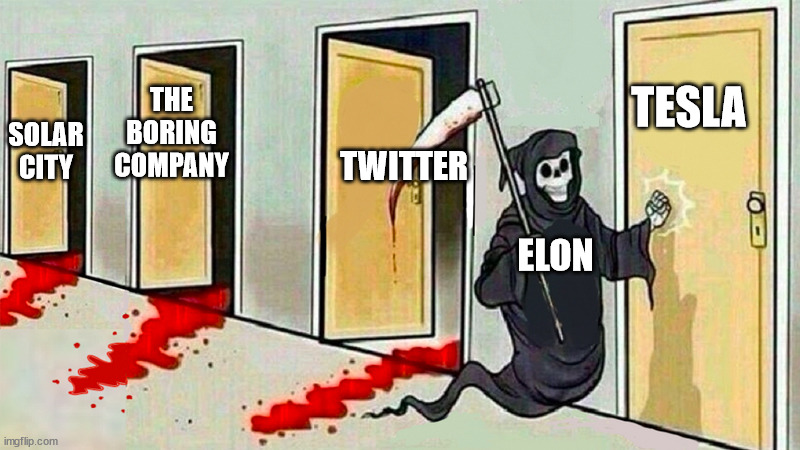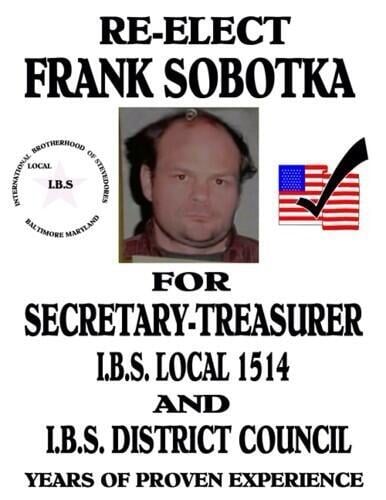- cross-posted to:
- realtesla@lemmy.world
- cross-posted to:
- realtesla@lemmy.world
This is a death sentence for Tesla. I have a Model 3 that I enjoy despite its shortcomings. One of the deciding factors was the supercharger network. It’s the easiest system I’ve used for charging. It makes all other networks infuriating in comparison.
A lot of people get Teslas for the ease of charging alone. If the network starts to falter, people will leave the brand even faster than they already are.
Tesla really needs to vote this idiot out of the CEO position before he kills the company.
US needs to regulate chargers.
Yes, yes, market and all. But look at printers. Or charger cables for small electronic devices (EU stepped in). Lock-in of customers is an incentive working against common chargers.
US needs to regulate chargers.
- The Department of Transportation, in partnership with the Department of Energy, finalized new standards to make charging EVs convenient and reliable for all Americans, including when driving long distances. The new standards will ensure everyone can use the network – no matter what car you drive or which state you charge in. The standards also require strong workforce standards;
- The Federal Highway Administration (FHWA) outlined its final plan for compliance with the Build America, Buy America Act for federally funded EV chargers. Effective immediately, all EV chargers funded through the Bipartisan Infrastructure Law must be built in the United States. The plan requires that, effective immediately, final assembly and all manufacturing processes for any iron or steel charger enclosures or housing occur in the United States. By July 2024, at least 55 percent of the cost of all components will need to be manufactured domestically as well;
- The new Joint Office of Energy and Transportation released a notice of intent to issue a funding opportunity for its Ride and Drive Electric research and development program. This program will advance the goal of building a national network of EV chargers for all Americans by supporting EV charging reliability, resiliency, equity, and workforce development;
- The Department of Energy today announced $7.4 million in funding for seven projects to develop innovative medium-and heavy-duty EV charging and hydrogen corridor infrastructure plans serving millions of Americans across 23 states;
- FHWA announced details for its soon-to-launch Charging and Fueling Infrastructure (CFI) discretionary grant program. The program will make available more than $2.5 billion over five years – including $700 million in funding through the first round of funding available to states, localities, Tribes, territories, and public authorities – to deploy publicly accessible charging and alternative fueling infrastructure in communities across the country, including at schools, grocery stores, parks, libraries, apartment complexes, and everywhere else Americans live and work; and,
- The Administration highlighted major manufacturing and other new facilities spurred by these investments and the Biden-Harris Administration’s Made in America policies, including new commitments from domestic EV charging manufacturers and network operators.
Assuming it isn’t strangled in the cradle by Red State infrastructure haters (like the HSR projects through the Midwest that Obama failed to implement), this could be a good thing.
But I’ve seen so many of these kinds of plans get a ton of money and produce vanishingly little in the way of material change. So we’ll see where it all goes.
Not to mention the charging infrastructure is one of the reasons some people haven’t made the switch yet. Anything holding back charging expansion is a disaster in my view.
I don’t think that’s it at all. The cost of a new car, any new car, is still out of reach for the vast majority of Americans, much less a dedicated daily commuter vehicle (because you need a gas car for long trips). PHEV is an imperfect compromise, but there simply aren’t enough used PHEV models available on the market.
I bought a car last year, and I really wanted to get something electric, but the car I need just doesn’t exist at the price I can afford. Chargers didn’t factor into it.
You say “you need a gas car for long trips”, and “Chargers didn’t factor into it”.
Isn’t that directly contradicting? Why else do you feel like you need a gas car for long trips if it isn’t related to either not enough chargers or chargers still not being fast enough for you? Chargers absolutely factor into that part of why you didn’t buy electric yet.
But also, the notion that they can’t do long trips is already pretty outdated. There are very few places left where you would even need to take a detour to take a long trip in an electric car. The only downside is that charging at max speed takes about 3x as long as filling with gas still, and not every charging station is max speed. As that continues to improve, it’ll be less and less of a difference.
So, funding the R and D department of the charging network, as well as the construction of the charging network, are absolutely fundamental to more people adopting electric as their single vehicle choice. And not as their second vehicle only for one small purpose.
If I want to go anywhere out of my state, I now need to budget nearly an hour every 200 ish miles for charging. That turns what used to be a 6 hour trip into closer to 8 or 9.
It would take most of the charge range just for me to get to anything interesting, and now not only do I have hours of driving to do, but also hours of sitting around doing nothing.
A gas car can be fully refilled in 5 minutes and be ready for another 300 miles of driving. Electrics just don’t have the appeal to someone like me who makes somewhat regular trips over distances. I’d love to take trains, but that’s not viable in my area, so I’m sticking with gas cars for now.
Not an hour, I regularly go from STL to Chicago in my electric car and it adds 25 min if im driving right back. If I’m staying overnight and plug-in it only adds 15. That’s also when I go to the bathroom and get a snack.
Just like… you know… filling a normal car up with gas. Take a piss, grab some jerkey, have a smoke if that’s your thing, go on reddit for a minute, then keep driving.
It’s not hard. The paradigm is barely changing. I genuinely don’t get how people fail to understand that.
I get the hesitation though. You see gas stations everywhere, if you don’t know what you’re looking for you don’t see charger stations. My car was the last gas thing I had, mower, trimmer, I already had solar panels from a Illinois solar program. I love taking friends on trips with it and then seeing that it’s not scary. I have run into broken chargers twice. Once from vandalism but thankfully it still worked for me as I registered my car so it automatically uses my account to charge when plugged in. The other was a software issue that they had to send someone out to hard reset. Reminds me I told them it would be a cool idea to have registered/trained people that get free charging credits for fixing ones they come across.
How the hell did he run down a company like Tesla?
That’s one way to stop a union.
Outwardly this looks like steering the boat toward the waterfall. I’m guessing this is predicating another move by Musk to “prove” to the stock market that Tesla is an AI company that happens to make cars, rather than a car company that has potential AI products. And (if so) it probably ties into that remark he made about using idle Teslas as compute resources.
Is this clown trying to tank the company because he didn’t get his payout?
I think he’s trying to tank the company because he sees Sundar doing the same shit at Google and assumes it will lead to a big payout.








